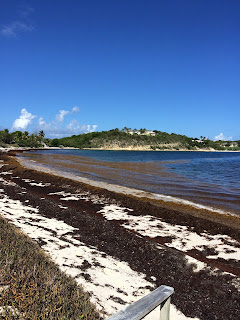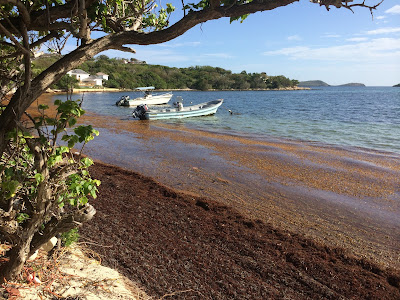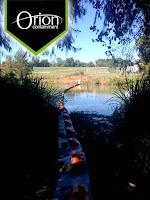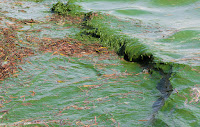 Scientists and officials debate about the location, depth, breadth, and even the appropriateness of the name for these floating trash islands. But, the debate seems scholarly and the problem so very distant from our day-to-day lives. One can’t help but wonder if it all really matters. Even if it does, can we do anything that will have a real impact?
Scientists and officials debate about the location, depth, breadth, and even the appropriateness of the name for these floating trash islands. But, the debate seems scholarly and the problem so very distant from our day-to-day lives. One can’t help but wonder if it all really matters. Even if it does, can we do anything that will have a real impact?In reality, the problem of trash islands in the oceans is growing at a significant rate. These “garbage patches” have accumulated in mass in certain areas of the Atlantic, Pacific and Indian Oceans. Not only are they here to stay, these islands of floating trash are growing. The largest of these is known as “The Great Pacific Garbage Patch.” It stretches intermittently across the Pacific from California to Japan, and is estimated to contain somewhere between 200,000 and 500,000 tons of garbage. About half of the trash is reported to be plastic bottles. The rest consists mostly of packaging.

The impact is more than to just sea turtles who mistake the floating grocery bags for jellyfish. The floating plastics eventually break down into tiny particles called microplastics that are ingested by aquatic life. Think about that tuna sandwich you had for lunch. The tuna may have eaten the equivalent of a plastic bottle or two. Then you ate the tuna. The chemicals from the plastics also leach into the water and infuse broad ecosystems with toxins. Completing the cycle, the water from the ocean supplies moisture to the air we breathe and to the sky for rain.
While managing the problem isn’t simple, there are simple measures that we each can take to keep from continuing to contribute to its growth:
1) Minimize Your Use of Plastics
While not easy in today’s fast-paced world, even simple measures at home can make a tremendous difference. For example, instead of using disposable water bottles, convert to using a refillable bottle. (Remember, it’s estimated that disposable water bottles make up half the trash in these floating garbage patches in the ocean.)
The EPA estimates that 80% of marine debris originates as land-based trash. Every stream, river and lake eventually empties into the ocean. That means that the candy wrapper flitting around the parking lot is likely going to end up in the stormwater system. The same for the overflowing trash bins we see every day in public outdoor places. What can you do? Pick up your loose trash and make sure it’s contained appropriately. If you see overflowing trash bins, notify the responsible parties. By letting them know that you care, you’re helping them make it a priority.
3) Encourage use of Curb Filters for Storm Drains
 Keep an eye out for unguarded storm drains in your cities and neighborhoods. Storm drains typically empty directly into the waterways (streams, rivers, etc.) without any filter in place. Storm drains can be equipped with inexpensive guards or filters (such as GEI Works’ Curb Inlet Guard) to capture free floating trash and prevent it from entering the water systems.
Keep an eye out for unguarded storm drains in your cities and neighborhoods. Storm drains typically empty directly into the waterways (streams, rivers, etc.) without any filter in place. Storm drains can be equipped with inexpensive guards or filters (such as GEI Works’ Curb Inlet Guard) to capture free floating trash and prevent it from entering the water systems.
Note: Curb guards need to be periodically emptied. If you see a curb guard that is full, please help by alerting your local stormwater authority.
4) Suggest Trash Boom for Potential Capture Areas
 If you live near a body of water that is prone to accumulate trash, encourage your local stormwater management authorities to implement a debris management system. GEI Works manufactures custom solutions such as trash boom for these types of projects.
If you live near a body of water that is prone to accumulate trash, encourage your local stormwater management authorities to implement a debris management system. GEI Works manufactures custom solutions such as trash boom for these types of projects.
With your help as good stewards of the world’s most precious resource (water), we can all look forward to a brighter and healthier tomorrow!
Additional Reading:
NOAA (National Oceanographic and Atmospheric Administration)
EPA (Environmental Protection Agency)
National Geographic













.jpg)
.jpg)




